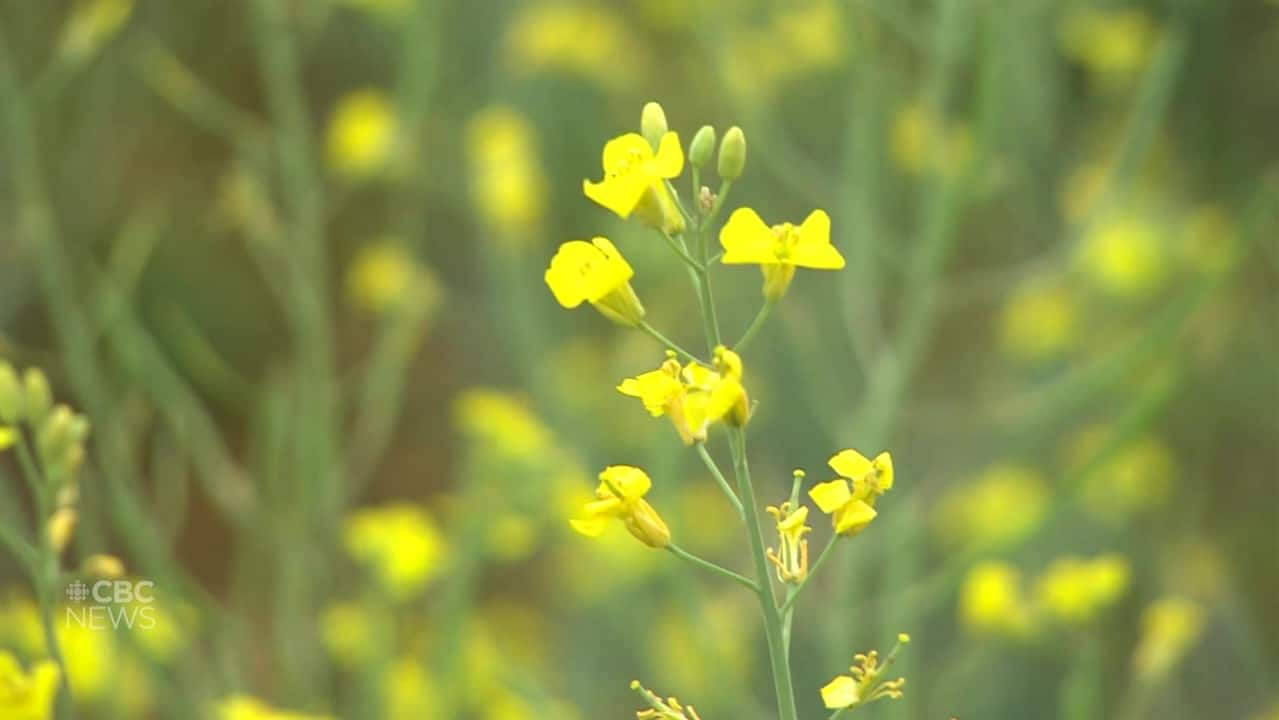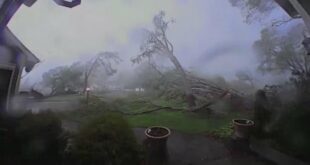Farmers are adapting practices to climate change, but say they need help from genetics

Canola is the golden crop of the prairies — both in terms of colour and profitability. But the signature export of Western Canada isn't adapted to long periods of heat, as farmers saw last year when extreme heat and drought cut canola yields drastically.
As climate change alters growing conditions, Canadian researchers are working with farmers to breed canola for a future of extremes, in the hopes of growing more heat tolerant varieties for the future.
Canola, sometimes called the Cinderella crop in reference to its success story in Canada, contributes more than $29 billion to the economy every year.
An abbreviation of the words Canada and oil, canola is a specific group of rapeseed varieties bred for cooking oil and animal feed. But before it made its way to North America, rapeseed was grown in Asia for thousands of years. Production in Canada only ramped up during the Second World War, to answer a critical shortage of lubricant oil for marine engines.
Climate change interrupts a Cinderella story
It wasn't until the 1960s that plant breeders in Saskatchewan and Manitoba developed varieties that produced quality, edible oil. After that, it was a quick ascent to success.
But the industry took a hit when, in the summer of 2021, Western Canada was enveloped in heat and drought. Most of Canada's canola is grown in Alberta, Saskatchewan and Manitoba.
Due to extreme heat and drought, production fell to the lowest level since 2007 and canola yields dropped by 40 per cent, according to a report by Statistics Canada.

"2021 was ugly," said Dean Roberts, a small grains farmer who grows canola, wheat, barley, peas, lentils and flax in Coleville, in west central Saskatchewan.
Roberts, who spoke to CBC News while out for a drive scouting his fields, said last year the heat cut his canola yields in half, if not more.
"It was too hot and too dry for too long," said Roberts, who is a board member of the Canadian Canola Growers Association and a director of the board for SaskCanola.
"We can take a certain amount of heat and a certain amount of drought, but that was too much of everything."

Manitoba grain farmer shows drought, heat damage to canola field
Brad Erb, a Manitoba grain farmer and reeve of the Rural Municipality of Macdonald, shows the damage done to one of his canola fields by drought conditions and high temperatures. Erb said future rain could help farmers in the area, but it's already too late for certain crops this season.
Heat vs canola: A two-pronged attack
Heat doesn't just hurt canola by drying out the soil. The cool-season crop also suffers if there are long stretches of high temperatures during the flowering season, which is typically late June and early July in Western Canada.
Malcolm Morrison, a research scientist with Agriculture and Agri-Food Canada who specializes in oilseeds, said heat during flowering harms canola's pollen vitality, as well as its ability to self-pollinate and, ultimately, fertilization.
"Canola is not a tropical crop," Morrison said.
While sometimes the plants can recover after a few hot days by producing new branches with flowers, that will delay maturity — a problem for Western Canada's shorter growing season.
Heat can also make the flowers abort or fail to form seed pods — which means no oilseeds.
"You really get a two-pronged attack from the weather; you run out of moisture and the flowers abort, so you lose yield on both sides of that equation," Roberts said.

While his crops have fared better in 2022, Roberts knows the future will be unpredictable.
Greenhouse gas emissions caused by humans are contributing to more frequent and more intense heat waves, and Canada is no exception.
Roberts said he doesn't think any canola variety on the market right now could withstand a repeat of 2021.
"I think it's up to the plant breeders now to go back to their genetics and start chasing some of that heat tolerance as it gets to be more prevalent."
That's exactly what a team of plant breeders at the University of Manitoba are hoping to do.
Breeding plants for 20 years in the future
Rob Duncan, a professor at the University of Manitoba and a canola breeder, has been working on developing heat-tolerant varieties of canola, along with Chad Koscielny, North American canola breeding lead at Coteva Agriscience.
"You always have to be looking forward," Duncan said. "You are essentially predicting how the varieties you produce now [are] going to adapt in 10 or 20 years or the long-term future."
Duncan said they've had some promising results through selective breeding — mixing certain varieties of canola to create hybrids with better tolerance for heat.

While the new varieties aren't ready for the commercial market yet, Koscielny said the goal is to help farmers be better prepared if there's a repeat of the 2021 heat dome.
"These hybrids have the potential to expand potential acres of canola, and minimize the impact of extreme environmental events," he said.
Morrison said he has faith that the scientific community will come up with viable solutions as growing conditions shift.
"We have to make our crops more agile," he said. "I think that one of the best ways of doing this is to have active plant breeding programs."
The difficult thing for farmers is climate change doesn't just make things hotter, but more unpredictable, Morrison said.
"If we could say that, oh, boy, we're always going to be able to plant our crop April 5 [from now on], but we can't because one of the things with climate change is that there's an increase in fluctuation."
Canola farmers no stranger to innovation
If breeders can develop a more heat-tolerant variety, it wouldn't be the first time that research helped canola farmers adapt to harsh elements on the prairies.
Roberts recalls how, on older varieties of canola, the pods would fall and shatter in a big windstorm. Breeding programs responded by developing more durable varieties.
He said heat will be the next challenge. "We're going to need more robust varieties in the future. I don't know if we're there right now."
Duncan agreed, and said farmers may also have to think about diversifying their portfolio, so to speak, by planting a combination of varieties of canola on their fields, some with tolerance to flooding, other with tolerance to heat.
He said breeding is just one part of the climate adaptation puzzle, and that farming strategies including no-till farming and irrigation are also part of the equation.
While Roberts acknowledges that's true, he said farmers are already doing everything they can on the ground.
"We've been dealing with climate change longer than the general public," he said. "We are tied very directly to our land and the weather."
"The genetics are where the biggest move is going to have to come from."
Our planet is changing. So is our journalism. This story is part of a CBC News initiative entitled "Our Changing Planet" to show and explain the effects of climate change. Keep up with the latest news on our Climate and Environment page.

Add some “good” to your morning and evening.
A variety of newsletters you'll love, delivered straight to you.
*****
Credit belongs to : www.cbc.ca
 MaharlikaNews | Canada Leading Online Filipino Newspaper Portal The No. 1 most engaged information website for Filipino – Canadian in Canada. MaharlikaNews.com received almost a quarter a million visitors in 2020.
MaharlikaNews | Canada Leading Online Filipino Newspaper Portal The No. 1 most engaged information website for Filipino – Canadian in Canada. MaharlikaNews.com received almost a quarter a million visitors in 2020.







